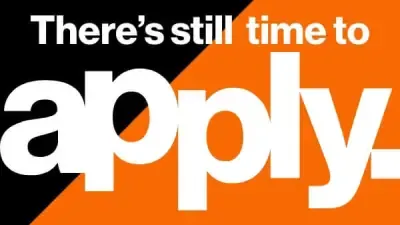Student-Redesign Project Wins Top Prize From American Packaging
Projects impress corporate sponsors with new look and sustainable packaging focus
A. Sue Weisler
The Chex Mix design team won first place in a recent design challenge that brought together students in packaging science, graphic design and industrial design. Shown above, front row, left to right: Valerie Nadeau, fourth-year packaging science, Jessica Pirrelli, graduate packaging science, Elizabeth Francis, fourth-year visual media and Lorrie Frear, assistant professor, graphic design.Back row, left to right: Karen Proctor, professor, packaging science, Daniel Johnson, department chair, manufacturing and mechanical engineering technology/packaging science, Andrew Maruska, fourth-year graphic design, David Geier, Rochester operations manager, American Packaging Co., and Larry Webb, technical director, American Packaging Co.
The most familiar bags of treats in the grocery store snack aisle may get an updated look thanks to students at Rochester Institute of Technology. A team of graduate and undergraduate students revamped the current Chex Mix packaging to showcase a modern look and create a more sustainable design.
The new package won first place in a recent design challenge at RIT, sponsored by the American Packaging Corp., that used a variety of General Mills’ brands. Graduate students in the packaging science program in RIT’s College of Applied Science and Technology, and undergraduate students in the industrial and graphic design programs in the College of Imaging Arts and Sciences worked together to update several familiar products such as cake mixes and snack foods.
Valerie Nadeau and Jessica Pirrello, both packaging science majors, joined Elizabeth Francis, a visual media student, and Andrew Maruska and Jessica Billow, both graphic design majors, to develop the winning Chex Mix design.
“We saw that Chex Mix was aimed toward a different market and we wanted bring it in a different direction,” says Maruska. General Mills first introduced the recipe for Chex Mix in 1962 on boxes of Chex cereal. In 1985, the company pre-packaged the popular snack mix. The students researched the product’s current market, branding design and consumer purchases. All background work was incorporated into new structural designs, use of color and emphasis on healthful snacks, he says.
“We wanted to expand the audience through design,” adds Nadeau. She and the team were surprised by the win and the financial reward. Each member of the team received a check for $200 from American Packaging Co.
This was the first time students from the two disciplines—packaging and graphic design—worked together on a joint design project. They were able to bring together elements of packaging structure and production with graphic arts and strategic color usage.
“RIT graphic design professor Lorrie Frear and I have been working together since last summer determining how to bring two classes together as a team to meet the project challenges,” says Karen Proctor, RIT professor of packaging science. “It was a success. Both the students and our corporate sponsor, American Packaging, recommend continuing this program in future class work.”
“We put this together not knowing what the outcome might be, but we were very impressed with all the presentations and all the work,” says David Geier, Rochester operations manager, American Packaging Co.
During the award presentation for the students, Geier said: “You wrestled with a lot of the things we wrestle with in business—how do you get people from diverse backgrounds to come together and understand competing priorities? That’s real world experience.”
Projects were judged on creative graphic design, packaging innovation, sustainability, shelf presence and space utilization, along with solutions for minimizing handling through distribution and costs to produce the product. Additionally, the teams compared the product package’s sustainability factor through use of the Sustainable Packaging Coalition Comparative Packaging Assessment, also referred to as COMPASS, and the Walmart Packaging Scorecard, two industry standards for assessing packaging products, materials and emissions.
“The students were challenged developing sustainable, innovative packaging that brings a ‘wow factor’ to the packaging sold at the store shelf and to add value to the consumer in use and disposal of the packaging,” Proctor says. “The students exceeded all expectations on delivery and prototyping of their ideas. All of their prototypes that were submitted reduced the amount of packaging in the supply chain and became the product category leaders in using the least amount of packaging. One of the prototypes eliminated 78 percent of the packaging materials.”
American Packaging and General Mills representatives will review taped presentations by the students to determine how some of their ideas might be incorporated into consumer products. Geier expressed an interest in continuing the design challenge next year.













